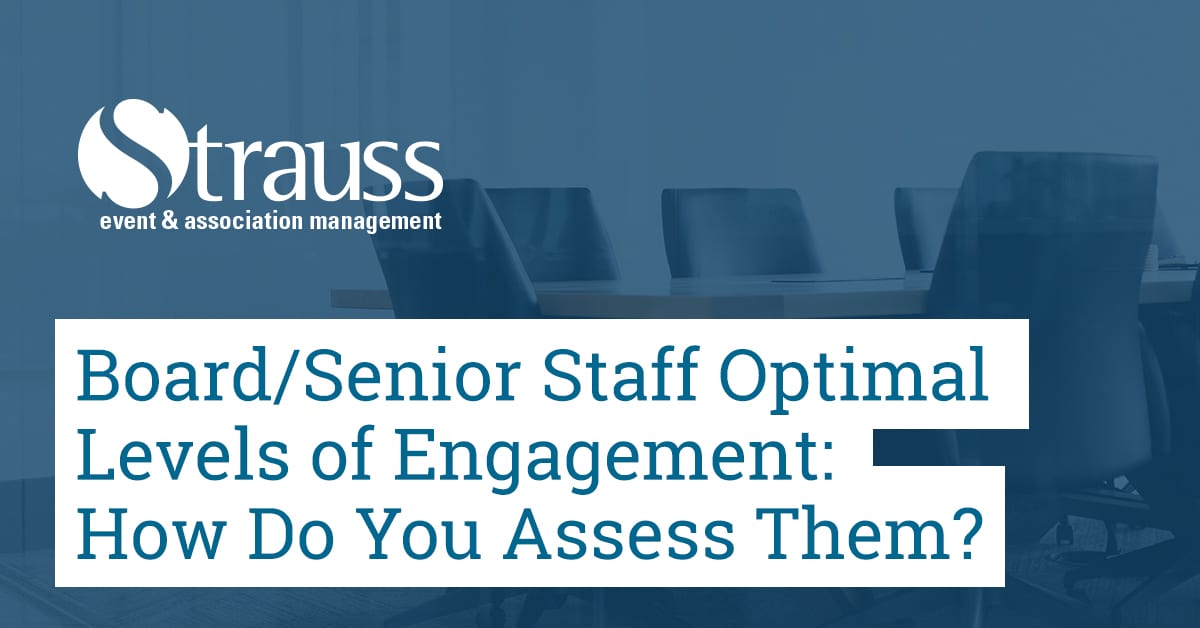Engagement is such a crucial factor in managing the new world where the COVID-19 pandemic exists. There are lots of discussions taking place regarding your association members’ financial health and how the pandemic will affect this year’s results and next year’s projections.
Before the world paused due to the pandemic, I attended the 2020 Symposium for chief staff executives and chief elected officers, hosted by the Canadian Society of Association Executives (CSAE). Glenn Tecker and Donna Dunn from Tecker International delivered the event. Before this session, I knew little about how valuable the information related to working with senior staff and the presidents and chairs of my respective boards would be.
Board Role “Continuum”
Glenn and Donna lead us through a two-day discussion, helping us understand our organization and how we lead it together. The one section my board incoming chair and I found quite powerful was when they talked about the board role “Continuum”, and the optimal levels of engagement from staff and board in the association. There is no “one answer fits all” since every organization has different levels of resources and structures that dictates where they are on the continuum.
The board continuum laid out how much time and work the board spends on the following categories:
- Strategy & Policy
- Strategy, Policy & Management
- Management
- Management & Operations
- Operations and Activities
I won’t go through the details of the continuum at this stage, but as an association management company (AMC) working with clients, I found the different stages of the continuum interesting.
Engagement
An exercise I found interesting and will focus on here, are the optimal levels of engagement for the board and senior staff. Again, there is no “magic bullet” or “right answer” for each organization but talking about optimal levels of engagement was a valuable exercise.
Tecker International did a good job breaking down the functional areas on which staff and volunteer leaders should focus. The functional areas were broken down into the following four categories:
- Direction Setting (strategic direction or vision, strategic planning & strategic implementation)
- Resources (financial & investment strategy, budgets, reporting, audit, volunteer leadership development, culture)
- Oversight (CSO performance, compensation & succession, board selection, assessment & effectiveness, staff structure)
- Other (brand positioning, government affairs policy, stakeholder relations, member recruitment & retention, sponsorships & others)
From the four functional areas, you assign a level of participation for the executive director and president or chairperson, the board that they currently handle, and the desired participation level for each area. The level of participation rankings are as follows:
- Makes the decision; approves and authorizes action
- Involved in discussing the choices as the decision is being made but does not have a vote
- Opinions are solicited before the discussion takes place and considered in the discussion
- Informed of the decision and the reasoning behind it after the decision is made
- Not involved
Take-aways
My incoming board chairs and I found the session’s exercise very enlightening to think and talk through. We were encouraged to talk about where we are today, what level of engagement currently exists within our associations, and the desired level of participation an executive director, board and chair member should have. How can we change the board’s strategy in order to meet our mission and vision? Where does the board want to be on the continuum, and what needs to happen to get your board to that desired level?
The process is not easy, but it is an extremely worthwhile discussion. As an executive director, I work with many association clients struggling to focus on what they want to accomplish. A board that knows its mission and vision can benefit from working through this exercise. In summary, it can help determine the leadership required of its executive director, CEO, board chair, president, and board members. Above all, keeping board members engaged in discussions surrounding the association’s direction is the key to the organization’s success.
Thank you to Tecker International for allowing me to share their material in this article.

